
基于位错机制的微米-亚微米尺度晶体塑性理论和计算(英文版)
全新正版现货
¥ 104.3 7.0折 ¥ 149 全新
仅1件
作者庄茁、柳占立、崔一南
出版社清华大学出版社
ISBN9787302546368
出版时间2020-08
装帧平装
开本16开
纸张胶版纸
定价149元
货号29131967
上书时间2023-05-13
- 最新上架
商品详情
- 品相描述:全新
- 正版全新
- 商品描述
-
【编辑】:
《基于位错机制的微米-亚微米尺度晶体塑性理论和计算(英文版)》将很有可能成为国内外*本讲述在微米和亚微米尺度基于连续和离散位错机制的晶体塑性理论和计算专著。
【内容简介】:
《基于位错机制的微米-亚微米尺度晶体塑性理论和计算(英文版)》展示了在微米和亚微米尺度基于位错机制的晶体塑性理论模型和计算方法,便于理解“越细越硬”的强度尺寸效应。相比普遍认知的预应变引起硬化和退火引起软化,在小尺度材料上展示了相反的结果,即预应变引起软化和退火引起硬化。在晶体中观测到的反常规本构关系,例如,屈服强度的尺度依赖性,微柱压缩过程中的间隙塑性流动。这些新的反常规的力学特点改变了人们对连续介质力学和塑性流动行为的传统认识。
【作者简介】:
庄茁,清华大学航天航空学院教授,先进力学与材料中心主任,国防973项目首席科学家。在动态断裂力学、非线性有限元和亚微米尺度晶体塑性的理论和计算等方面做出国际领先的科学成果;在飞机穿盖弹射救生系统、西气东输管线韧性止裂和页岩水力压裂体积改造等国家重大工程中做出重要的技术成果。发表学术论文280余篇,含SCI期刊130余篇;出版18部书。获得*和省部级的科技和教育成果奖励10余项。中国力学学会常务理事、计算力学专业委员会主任委员。国际计算力学学会理事。高等学校力学类专业教学指导委员会副主任委员。
【目录】:
Contents
Chapter 1: Background and Signi.cance ..................... 1
1.1 Framework of This Book............................................... 1
1.2 Polycrystalline and Single-Crystal Plasticity ......................... 3
1.3 Size Effect on Crystal Plasticity at Micron and Submicron Scales..............................................5
1.3.1 Size Effect Observed in Material Experiments ................................................ 5
1.3.2 Size Effect of Yield Stress ........................................... 7
1.3.3 Strain Burst and Dislocation Avalanches........................................................12
1.3.4 Size Effect of Submicron Crystal Under Cyclic Loading.............................. 14
1.3.5 Size Effect of Deformation Morphology of Compressed Micropillars .............................................. 16
1.4 Method to Bridge Size Effect............................................ 17
1.4.1 Supersurface From Macro to Micron..................................17
1.4.2 Nonlocal Crystal Plasticity .................................................... 19
1.4.3 Discrete Dislocation Dynamics Simulation Method............. 21
1.5 Content of This Book .................. 22
Part 1 Continuum Dislocation Mechanism-Based Crystal Plasticity ......27
Chapter 2: Fundamental Conventional Concept of Plasticity Constitution .............. 29
2.1 Introduction ............................................. 29
2.2 One-Dimensional Plasticity ............................................ 30
2.2.1 Isotropic Hardening.................................................... 30
2.2.2 Kinematic Hardening ............................ 33
2.2.3 Rate-Dependent Plasticity............................................... 35
2.3 Multiaxial Plasticity ....................................................... 37
2.3.1 Hypoelastic-Plastic Materials .................................... 37
2.3.2 Small Strain Plasticity .................................................. 41
2.4 J2 Flow Theory Plasticity ............................................... 42
2.4.1 Kirchhoff Stress Formulation of J2 Flow Theory Plasticity .......................... 42
2.4.2 Extension to Kinematic Hardening ............................ 44
2.4.3 Large Strain Viscoplasticity......................................... 46
Contents
2.5 Rock-Soil Constitutive Model .......................................... 47
2.5.1 Mohr-Coulomb Constitutive Model ...................... 47
2.5.2 Drucker-Prager Constitutive Model..................... 49
2.6 Gurson Model for Porous Elastic-Plastic Solids.............. 51
2.7 Corotational Stress Formulation ..................... 54
2.8 Summary ............................................ 56
Chapter 3: Strain Gradient Plasticity Theory at the Microscale............................ 57
3.1 Size Dependence of Material Behavior at the Microscale.................................57
3.2 Couple Stress Theory...............................................60
3.2.1 Couple Stresses ............................................ 60
3.2.2 Rotation and Rotation Gradient..................................... 62
3.2.3 Virtual Work Principle..................................................64
3.2.4 Constitutive Relation of Couple Stress Strain Gradient Plasticity Theory ................................... 65
3.2.5 Principles of Minimum Potential Energy and Minimum Complementary Energy .......................................... 66
3.2.6 Equivalent Stress and Equivalent Strain ................... 67
3.3 Stretch and Rotation Gradient Theory ................. 70
3.3.1 Strain Gradient Tensor............................71
3.3.2 Decomposition of Strain Gradient Partial Tensor h0 and Total Equivalent Strain ESG............................... 72
3.3.3 Constitutive Relation of Stretch and Rotation Gradient Strain Gradient Plastic Theory ........................... 76
3.4 Microscale Mechanism-Based Strain Gradient Plasticity Theory ......................................... 78
3.4.1 Experimental Law for Strain Gradient Plasticity Theory...................... 79
3.4.2 Motivation for Microscale Mechanism-Based Strain Gradient Plasticity Theory..................................81
3.4.3 Microscale Computation Framework ................... 82
3.4.4 Dislocation Model.......................................................84
3.4.5 Constitutive Equation of Mechanism-Based Strain Gradient Plasticity Theory...........................................84
3.4.6 Size of Cell Element at the Microscale .............. 86
3.4.7 Mechanism-Based Strain Gradient Plasticity Predicts Stress Singularity at Crack Tip ........................... 88
3.5 Summary ........................................ 89
Chapter 4: Dislocation-Based Single-Crystal Plasticity Model .................... 91
4.1 Introduction ...................................... 92
4.2 General Constitutive Model for Single Crystals.................92
4.2.1 Basic Kinematics of Crystal Plasticity............... 92
4.2.2 Slip Rate and Dislocation Density Evolution .................. 95
4.2.3 Plastic Stress Required for Dislocation Motion .............. 102
4.2.4 Update of Cauchy Stress in Single-Crystal Plasticity ........ 103
Contents
4.3 Higher-Order Dislocation Dynamics-Based Crystal Plasticity Model .................... 104
4.3.1 Governing Equations of Macroforces .................................... 104
4.3.2 Governing Equations of Microforces ................... 105
4.3.3 Coupling of Macroscopic and Microscopic Equations.......... 108
4.4 Size and Bauschinger Effect in Passivated Thin Films.........109
4.4.1 Two Hardening Mechanisms Caused by Geometrically Necessary Dislocations .......................................... 109
4.4.2 Model Description........................ 110
4.4.3 Size Effect of Passivated Thin Films Under Tension......... 112
4.4.4 Bauschinger Effect of Passivated Thin Films During Unloading ....................... 113
4.5 Summary ........................................ 118
Chapter 5: Revealing the Size Effect in Micropillars by Dislocation-Based Crystal Plasticity Theory ..................................... 121
5.1 Introduction ........................... 121
5.2 Strain Burst and Size Effect in Compression Micropillars .............................. 122
5.2.1 Stochastic Crystal Plasticity Model................... 122
5.2.2 Determination of Size-Dependent Slip Resistance....................124
5.2.3 Strain Bursts at Small Scales ......................................... 130
5.2.4 Application to the Compression of Single-Crystal Ni Micron Pillars ........................................................ 133
5.3 Size-Dependent Deformation Morphology of Micropillars.............................. 137
5.3.1 Simulation Setups ....................................................... 138
5.3.2 Size-Dependent Deformation Morphology ................................................... 140
5.3.3 Role of Short-Range Back Stress..................................... 143
5.3.4 Critical Transition Size ....................................................... 143
5.3.5 Discussions of Material Softening .................................. 147
5.4 Summary .................................... 149
Chapter 6: Microscale Crystal Plasticity Model Based on Phase Field Theory............................................... 151
6.1 Introduction ........................................... 151
6.2 Theoretical Model............................................153
6.2.1 Basic Equations of Crystal Plasticity Theory............................153
6.2.2 Phase Field Description of Plastic Slip....................................... 154
6.2.3 Stored Energy and Dissipated Energy ....................................... 155
6.2.4 Principle of Virtual Power..........................157
6.2.5 Coupled Balance Equations...........................158
6.2.6 Finite Element Discretization ............................. 159
6.3 Computational Demonstrations............................ 160
6.3.1 Dislocation Near a Free Surface ....................... 161
6.3.2 Dislocation in an Anisotropic Material...................162
6.3.3 Dislocation Near a Bimaterial Interface ............ 163
Contents
6.4 Applications to Heteroepitaxial Structures ................ 165
6.4.1 Critical Shell Thickness of Core-Shell Nanopillars ...... 166
6.4.2 Dislocations in Heteroepitaxial Thin Films ........... 169
6.5 Summary .............................................. 172
Part 2 Di
相关推荐
-

基于位错机制的微米-亚微米尺度晶体塑性理论和计算(英文版)
九品北京
¥ 106.67
-

基于位错机制的微米-亚微米尺度晶体塑性理论和计算(英文版)
全新广州
¥ 95.66
-

基于位错机制的微米-亚微米尺度晶体塑性理论和计算(英文版)、
全新北京
¥ 102.94
-

基于位错机制的微米-亚微米尺度晶体塑性理论和计算(英文版)
全新成都
¥ 89.18
-

基于位错机制的微米-亚微米尺度晶体塑性理论和计算(英文版)
九品北京
¥ 106.82
-

基于位错机制的微米-亚微米尺度晶体塑性理论和计算(英文版)
全新北京
¥ 89.40
-

基于位错机制的微米-亚微米尺度晶体塑性理论和计算(英文版)!
全新北京
¥ 102.94
-

基于位错机制的微米-亚微米尺度晶体塑性理论和计算(英文版)
全新北京
¥ 97.65
-

基于位错机制的微米-亚微米尺度晶体塑论和计算(英文版)
全新成都
¥ 102.30
-

基于位错机制的微米-亚微米尺度晶体塑性理论和计算(英文版)
全新南京
¥ 117.71
— 没有更多了 —









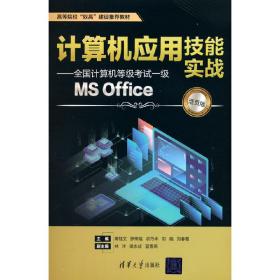
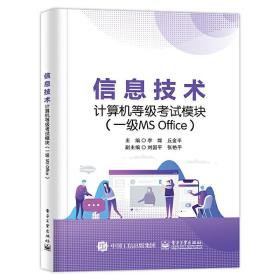
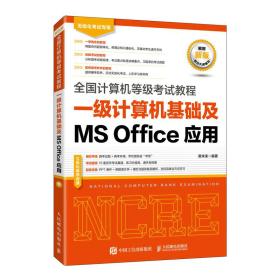
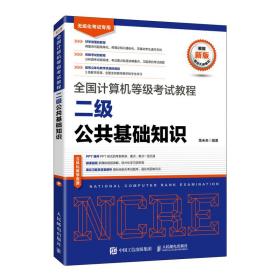
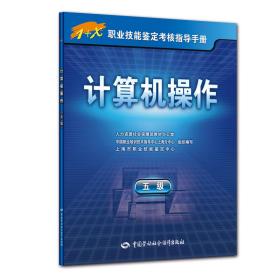



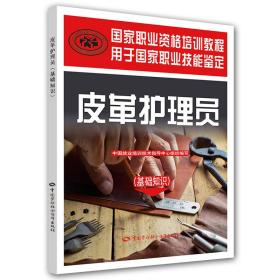

以下为对购买帮助不大的评价